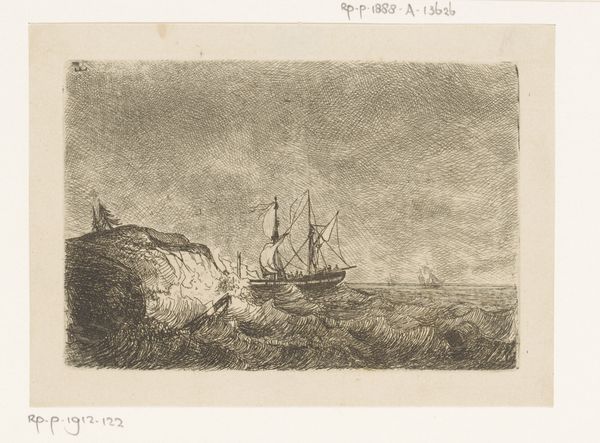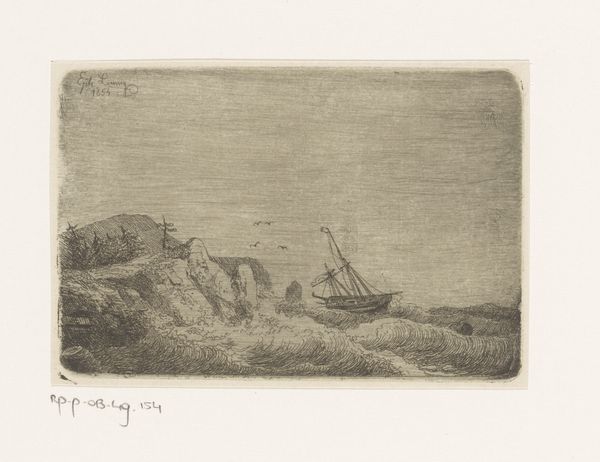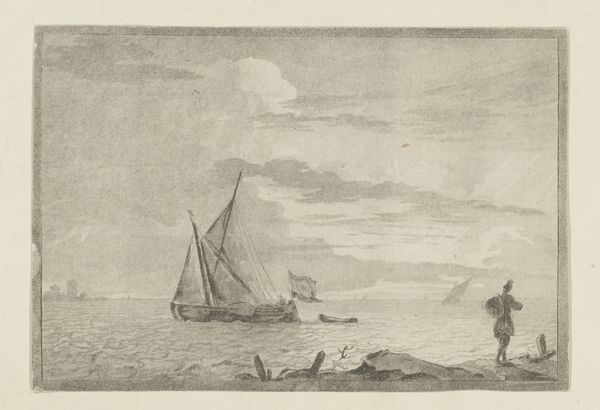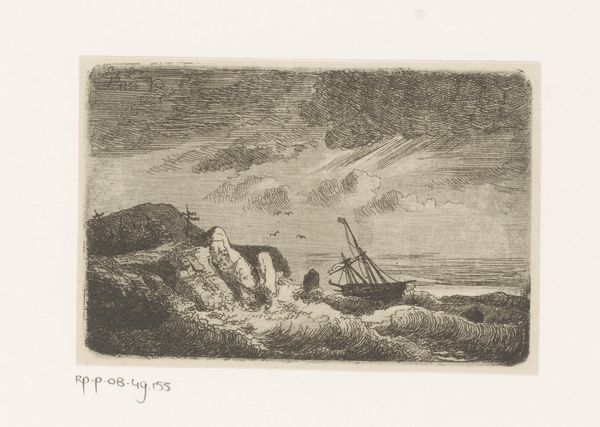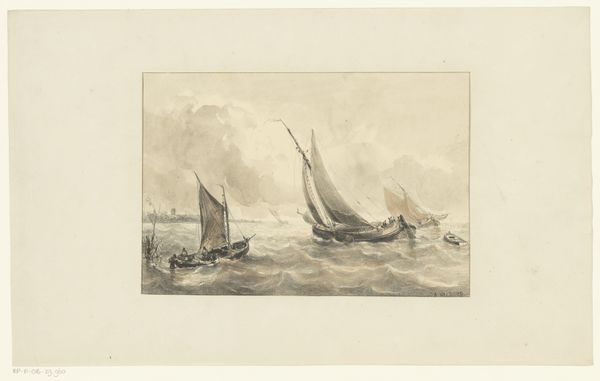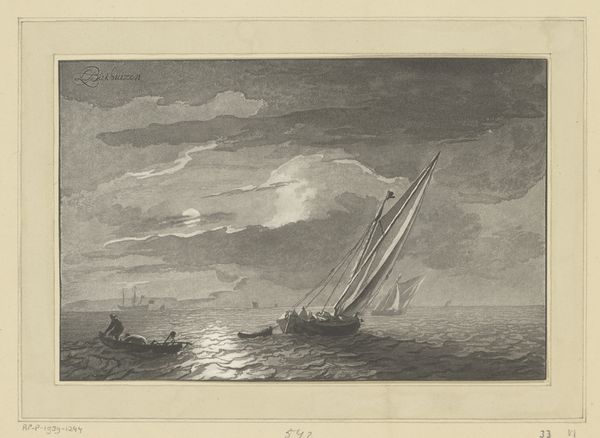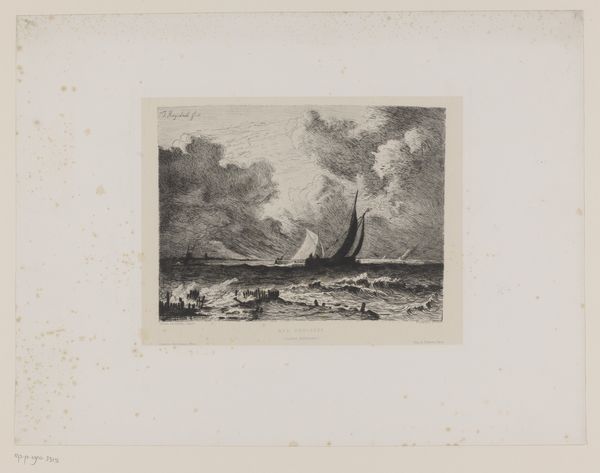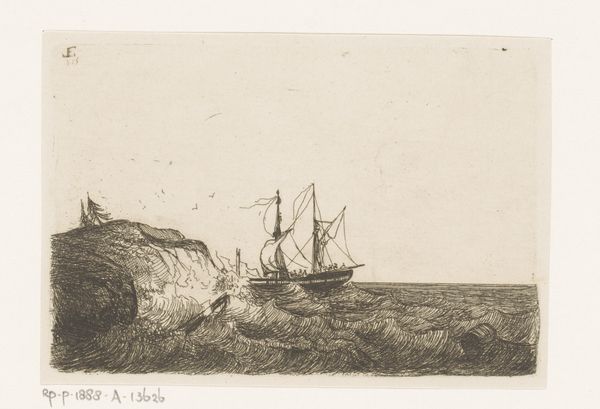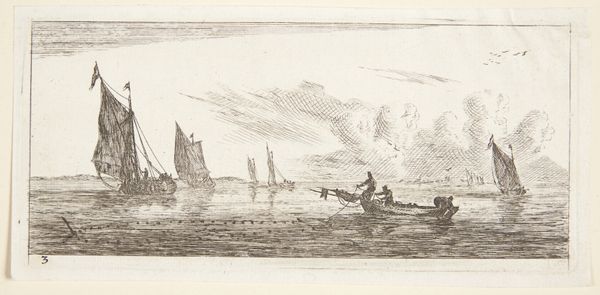
drawing, print, engraving
#
drawing
# print
#
landscape
#
romanticism
#
cityscape
#
engraving
Dimensions: height 92 mm, width 136 mm
Copyright: Rijks Museum: Open Domain
Curator: Welcome to the Rijksmuseum. Today, we'll be exploring "Wrecked Sailing Ship off the Coast," an engraving and print made by Egidius Linnig in 1844. Editor: The immediate sense is… ominous. Look at those dark, churning clouds and the ferocious waves crashing against the shore. It evokes a powerful sense of human vulnerability in the face of nature. Curator: Indeed. Linnig uses engraving to great effect here. Notice the detail in the waves, each line carefully etched to convey movement and the sheer force of the water. The labor involved speaks volumes about the 19th-century printmaking process itself. Consider also the distribution networks necessary to move prints such as these—disseminating images and ideas far beyond the immediate coastline portrayed. Editor: And beyond the pure mechanics of the production, consider how that vulnerability, so beautifully rendered, speaks to the precariousness of life, especially maritime life, in the 19th century. Maritime work can be gendered—who labored in these professions and the social impact on the families left behind. Curator: Good point. The image is full of this kind of contrast: the ship, ostensibly a symbol of human ingenuity, is being tossed around like a toy. This speaks to Romanticism's broader fascination with the power of nature over human endeavor, yet the artist's craft highlights the skill needed in rendering such raw, and turbulent scenes. Editor: It really does invite reflection on the larger themes of power and powerlessness—who has it, who doesn’t, and what are the social systems that perpetuate this? Who benefits from the shipbuilding industry? Who risks their lives on the open water? The aesthetic of this shipwreck gestures at so many potential avenues to be activated, but in service to larger social dialogues about human cost. Curator: Thinking about its original context, prints like this one were probably affordable to a rising middle class, satisfying their taste for dramatic landscapes and narratives. It shows a particular set of social and economic developments that made art consumption accessible to new audiences, not only about a moment of disaster. Editor: Absolutely, which reinforces how crucial it is to think intersectionally about class, access, and visual culture when looking at art. I am stuck on those skies above that churning ship. Thank you for expanding on my reading of those ominous forms. Curator: The pleasure is mine. Thank you for accompanying me as we observe Egidius Linnig's view of a tempestuous moment at sea. Editor: And consider its implications in the world around us.
Comments
No comments
Be the first to comment and join the conversation on the ultimate creative platform.
